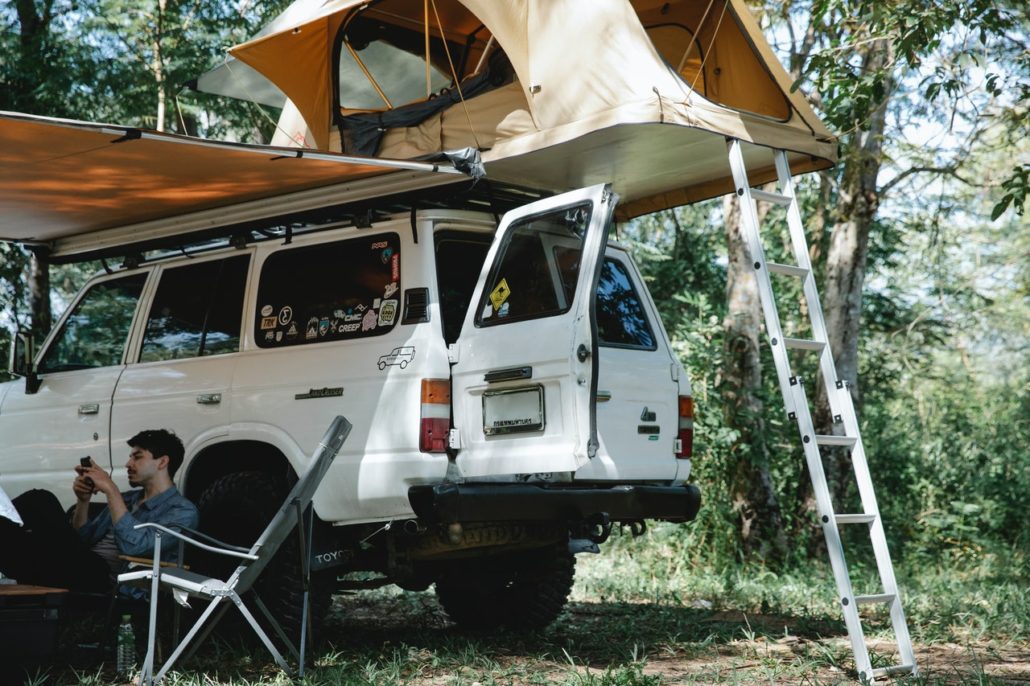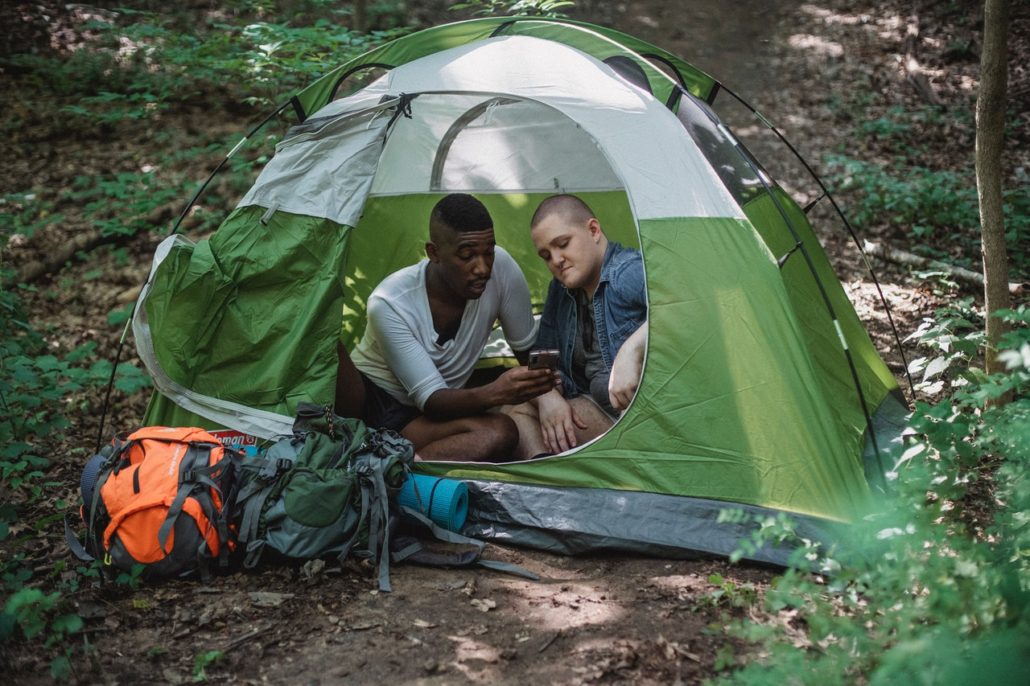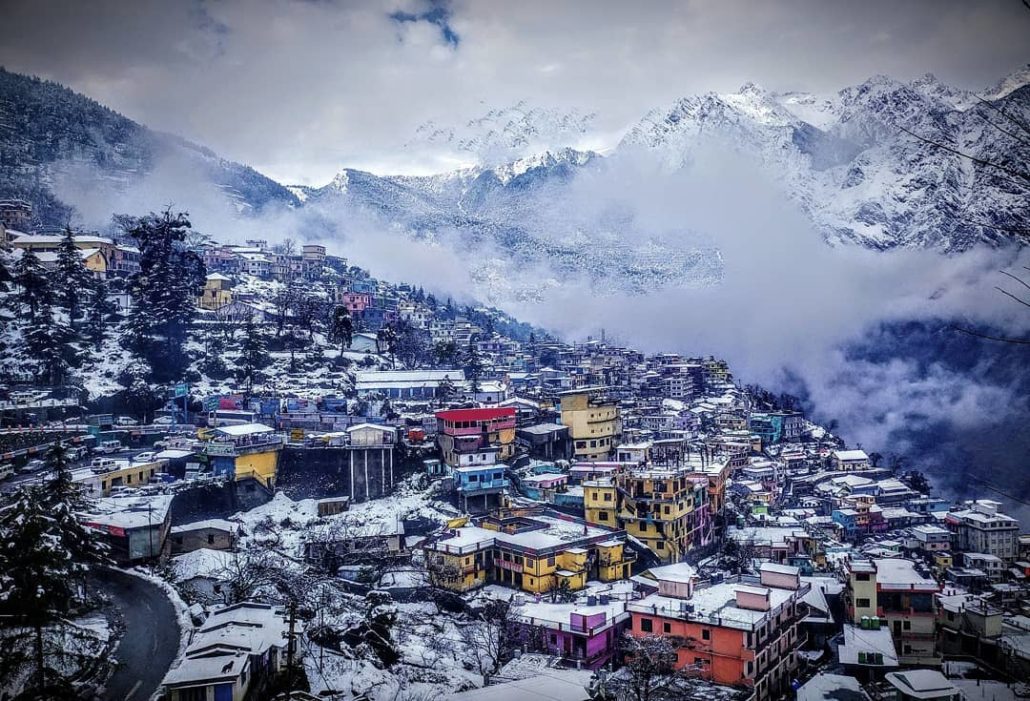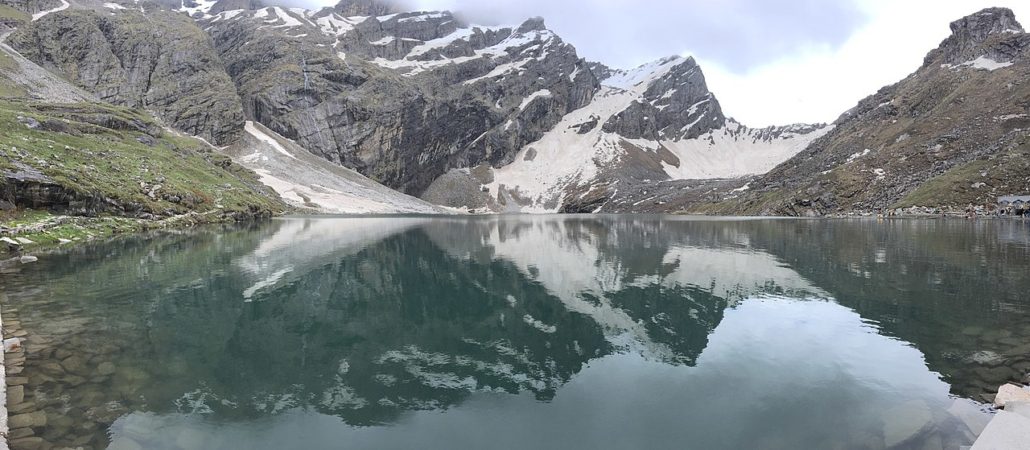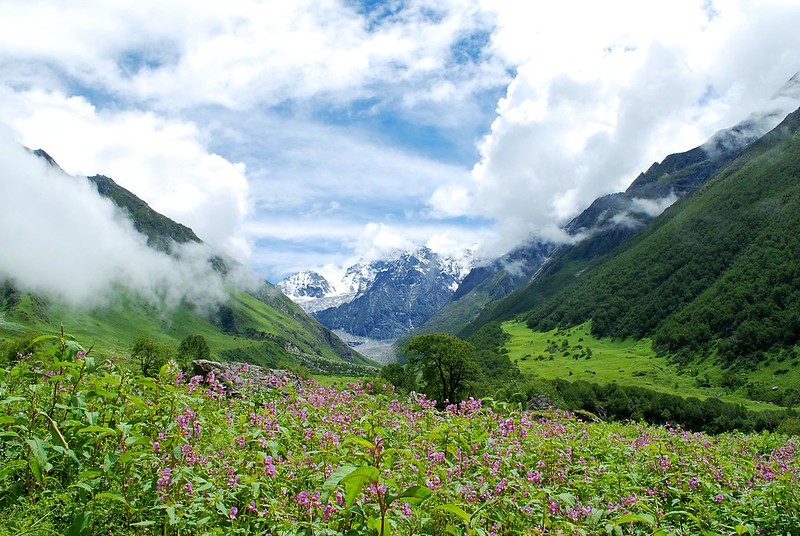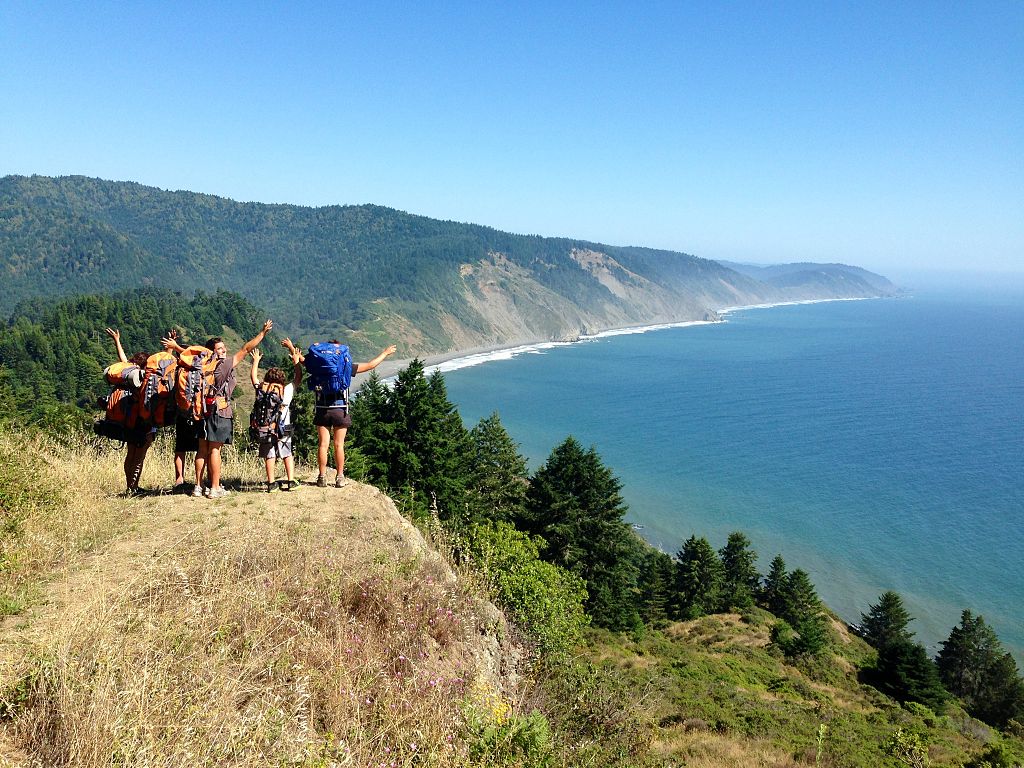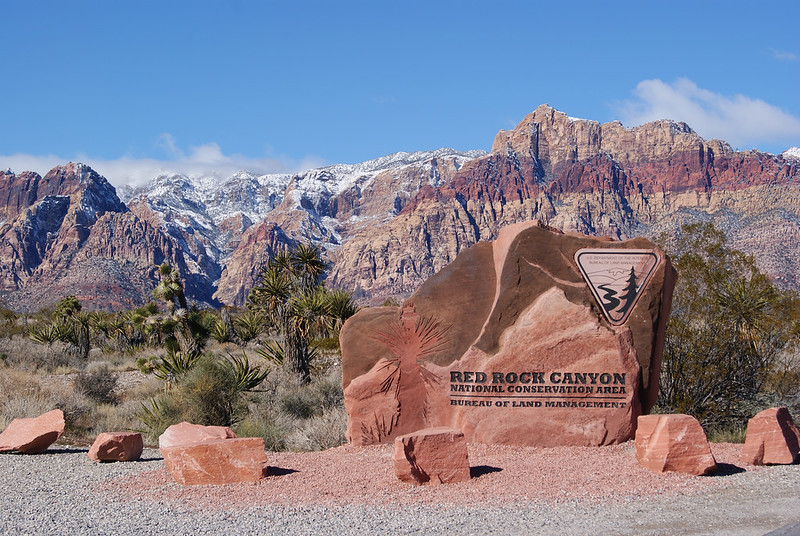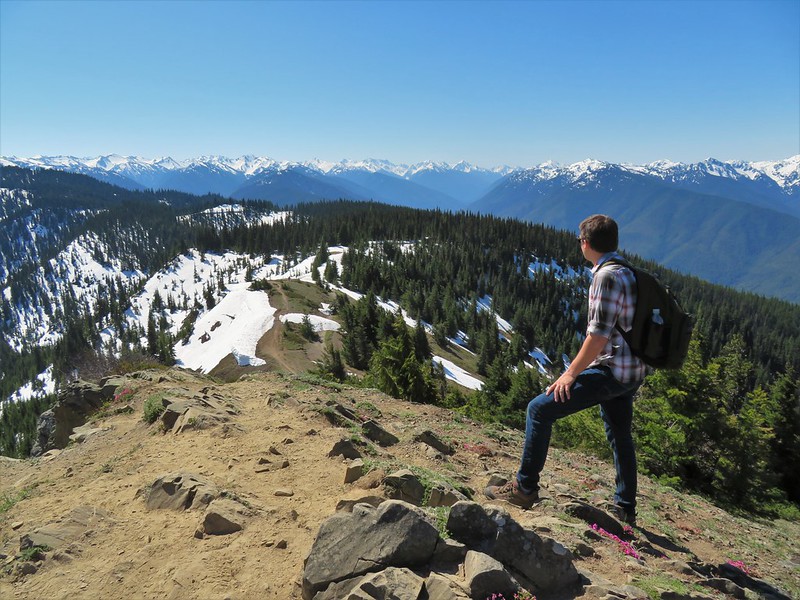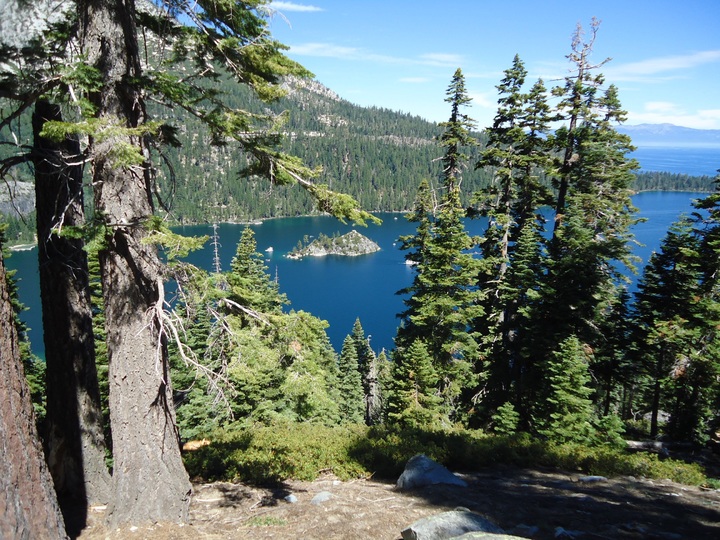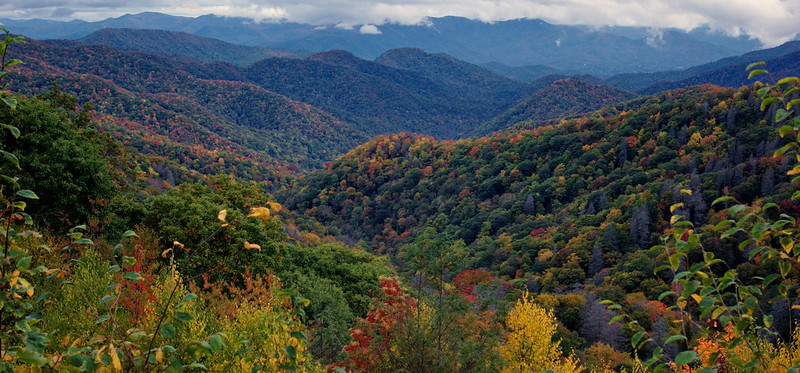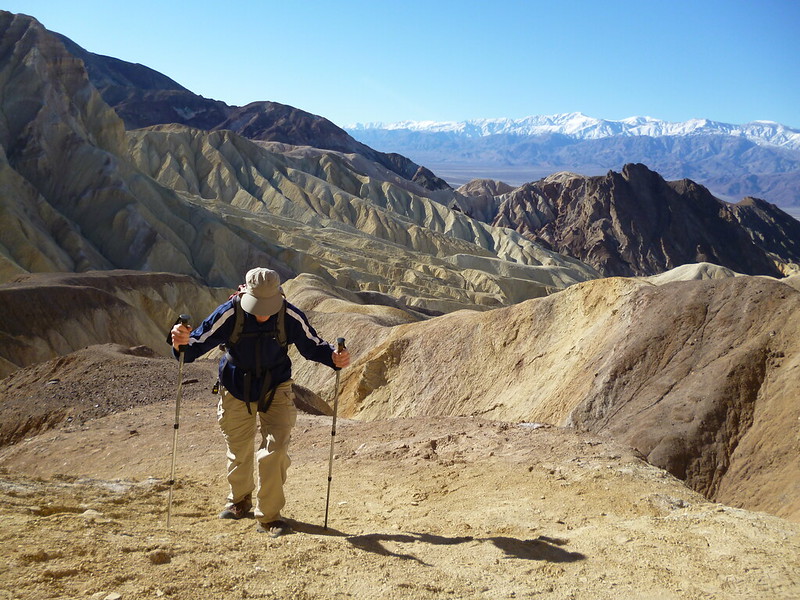Whether you’re planning to hike in unpredictable weather or your upcoming backpacking trip is threatened by an encroaching storm, backpacking in the rain poses a challenge. Dealing with rain can make backpacking interesting and much more difficult, but if you plan properly it’s nothing to worry about.
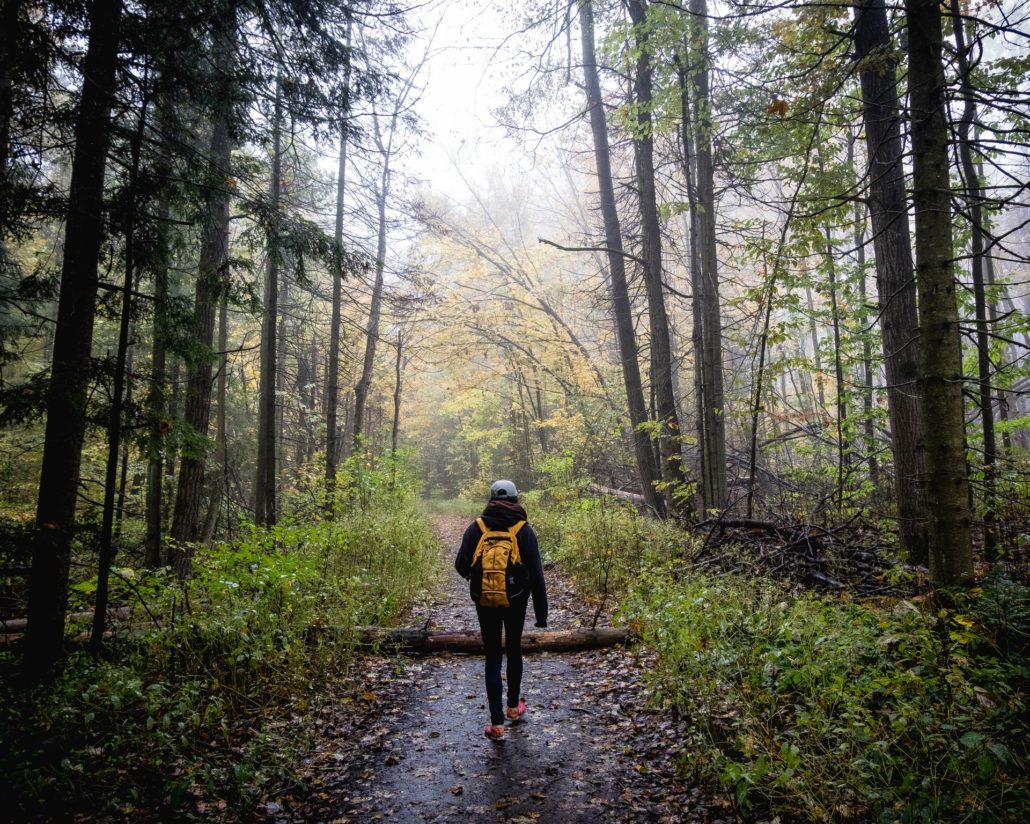
Don’t let a little rain get in the way of your backpacking trip!
Many people find that backpacking in the rain makes the experience feel more peaceful, and it’s very fun if you make sure you’re ready for it. Without planning, you may end up drenched, miserable, and regretting your trip, so make sure to know how to deal with it!
If you use synthetic clothing and fleece, rainproof layers, waterproof footwear or gaiters, and a waterproof pack, you shouldn’t end up too wet or cold when it rains hard. It’s also good to pack some extra clothing to change into.
Picking a good campsite, setting up properly, and ventilating your tent are also vital. Blisters are also more likely, so giving extra effort to prevention and care is important.
There are more dangers like hypothermia, slick trails, and dehydration, but if you’re careful and pay attention to potential problems you won’t have issues.
What to Wear Backpacking in the Rain
Layering is your best friend in a heavy downpour. Synthetics or a merino wool base layer are a good start to keep you warm and dry quickly. An insulating layer may be necessary depending on temperature, but obviously, this depends on the situation. A good rain jacket as your outer layer is ideal.
If you’re looking for a rain jacket for hiking, backpacking, and other outdoor sports I recommend looking into products that make gear for those activities. While there are plenty of great options on the market, a few brands to look into sited below:
These are not the only options, just examples that are good to start researching. Outdoor companies make products that will be more comfortable, ventilated, and suitable for higher levels of movement than other clothing brands.
Hardshell Jackets
Hardshell jackets are more suitable for higher amounts of rain, snow, and wind, and they’ll keep you protected in more hardcore weather.
Softshell Jacket
A softshell jacket will also often be waterproof, but will not offer the same protection as a hardshell jacket. Softshell jackets are generally more comfortable and breathable but offer less protection.
Picking your ideal options comes down to the conditions of your backpacking trip, and how bad of weather you are expecting. There’s no need to break the bank, but especially if you’re going on a longer backpacking trip, making an at least mid-range investment will pay off.
Rain clothing with vents also makes wet, humid weather a bit more bearable. In especially rainy areas a pair of rain pants may be helpful as well. A waterproof, breathable pair of pants and gaiters go a long way when backpacking in the rain, especially in lower temperatures.
If it’s very warm, you may be better off shedding layers instead of adding them. On a hot day, if you’re comfortable with wearing a pair of shorts with a rain jacket or light shirt. If you’re comfortable with it and the weather is warm, hiking in the rain without a shirt feels great.
When Your Clothes Are Wet
When backpacking in the rain, if you’re soaked through your layers, do your best to evaluate your warmth. Generally, it’s alright to keep on your wet clothing, especially if you’re wearing multiple layers of synthetic or wool items.
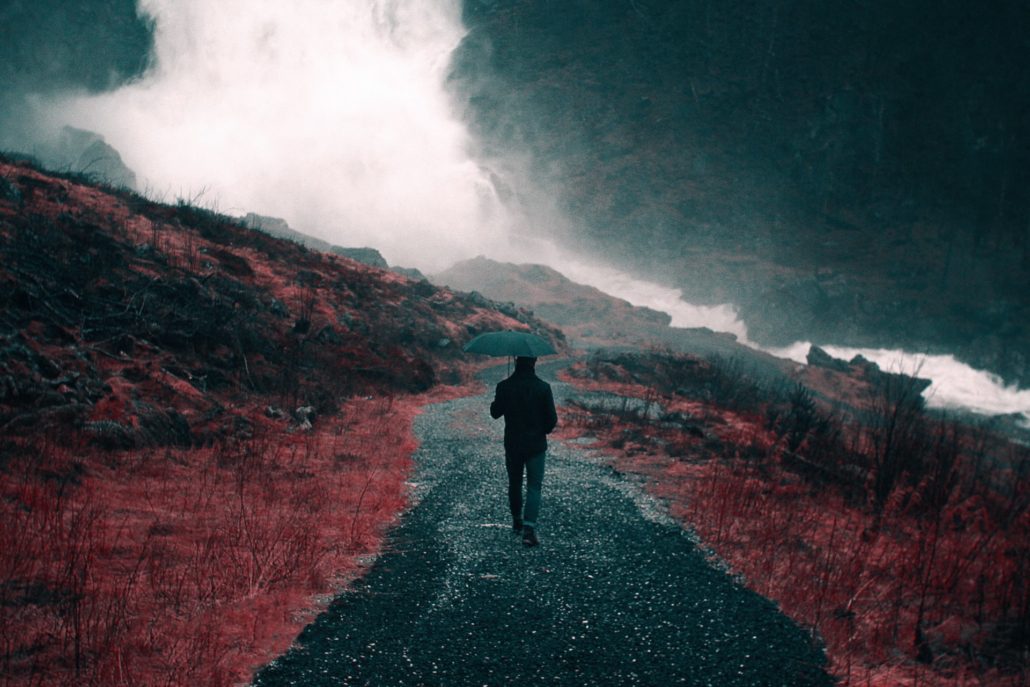
As the saying goes, there is no such thing as bad weather, just the wrong clothing!
It may not be comfortable, but unlike cotton, it will dry over time. When you get into camp and you’re set up, change into dry clothing. If possible, hang up your wet clothes to dry.
If you do not have the opportunity to set up a clothesline or dry them in the sun, putting wet clothing under a sleeping pad if you have one can help them dry quicker.
You should always have some dry clothing if hiking in bad weather, especially if the forecast is expected to stay bleak and rainy. In a pinch, staying in wet clothing can dry it off. It may be uncomfortable and take a while, but if you’re relatively warm and safe it won’t be a problem.
Type of Backpack To Bring Backpacking in the Rain
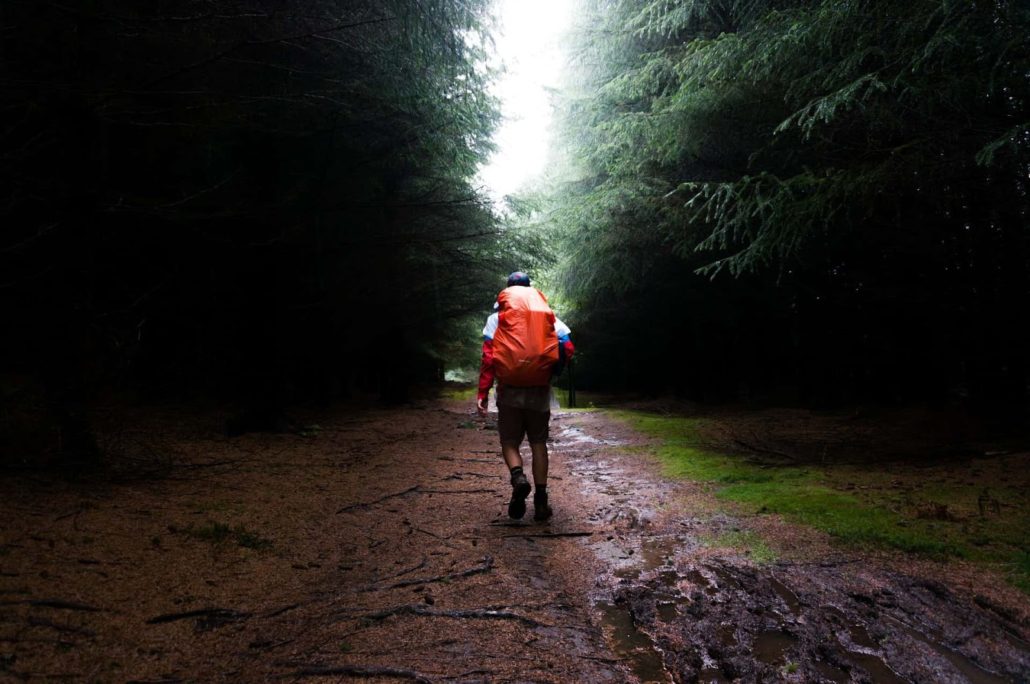
Be sure to bring the right equipment if you’ll be backpacking in the rain
I recommend using dry bags (trash bags and baggies work as well) for clothing and sensitive items in your pack, and a waterproof backpacking cover if your backpack’s waterproofing isn’t reliable. Trashbags aren’t bad in a pinch, but a waterproof backpack is a better option by far.
The extra cost means your gear won’t end up drenched on the trail. Most outdoor companies offer waterproof backpacks made for hiking and backpacking.
Check The Weather
Checking the weather is perhaps the most important piece of advice I can offer. It’s great to have all the best gear and know-how to use it, but if you don’t know what’s coming it won’t help you.
Knowing the weather can help you avoid poor conditions if you don’t want to deal with them, and be ready for them if you do.
It’s also good to know if you’re in for a storm or a shower, which can prevent potential issues down the line. Check the weather often, and be ready for the conditions coming your way.
Picking a Campsite and Staying Dry
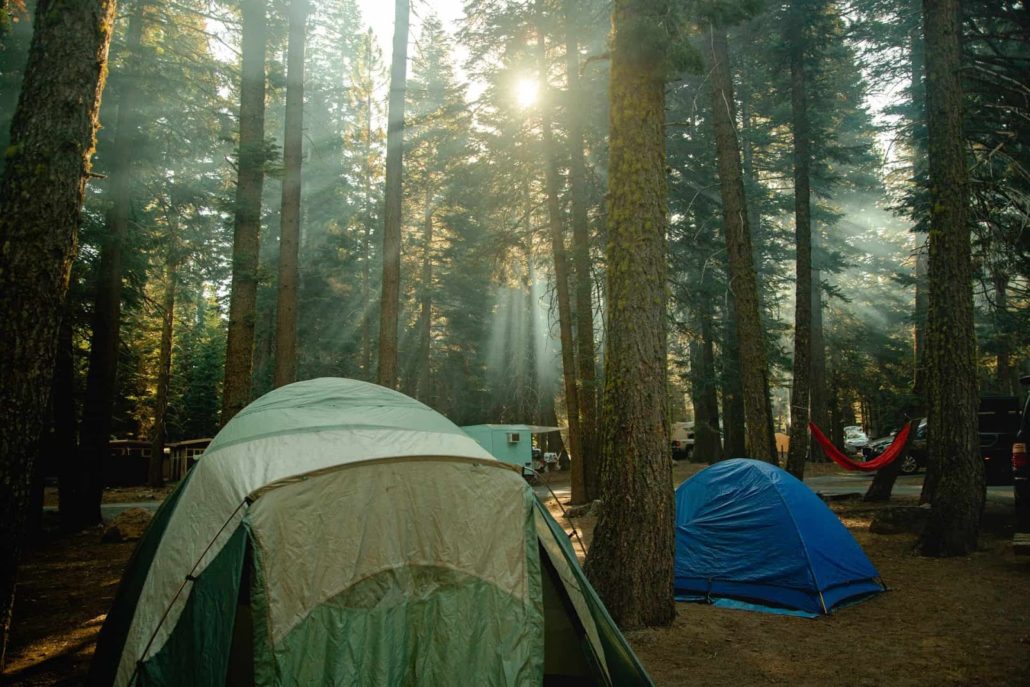
Especially when faced with rain, picking the right campsite is crucial
Picking the wrong campsite when backpacking in the rain can easily leave you in a puddle with your tent waterlogged. Look for a flat spot that’s not in a depression or low ground ideally with some tree coverage overhead. Never camp in a dry riverbed.
It’s also important to orient leeward of the wind, along with some sort of protection like boulders or trees. Make sure to avoid especially moist ground, and dead branches.
If you notice any dead branches above you, it’s a good idea to move your tent. A branch falling on you in the middle of the night is a less than ideal way to wake you from a deep sleep after a hard day of hiking in bad weather.
A tent footprint or a tarp is also ideal to prevent damage and leaks on the floor of your tent. If your tent has vents, put them to good use. Condensation buildup is no joke, and properly ventilating your tent when you have the chance will make your setup much more comfortable.
Otherwise, make sure your tent is waterproofed properly (You can manually waterproof it if an older tent is beginning to have trouble keeping water out), and utilize your rain fly or shield, or even a tarp rigged overtop of it.
Practice Before Backpacking in the Rain
For the experienced and newbie alike, practicing the proper use of your equipment can be a huge time saver in a bad situation. If you’ve never pitched your tent but you need to in a storm, you’re most likely going to make mistakes, and at worst have to redo your setup at a less than opportune time.
Practice using any equipment you’re unfamiliar with, because you may not always have the time to learn on the fly. This rule is especially important for tents, as it can be the most essential item to put up in heavy rain, but you can easily end up drenched for the night if you do it wrong.
Terrain Dangers
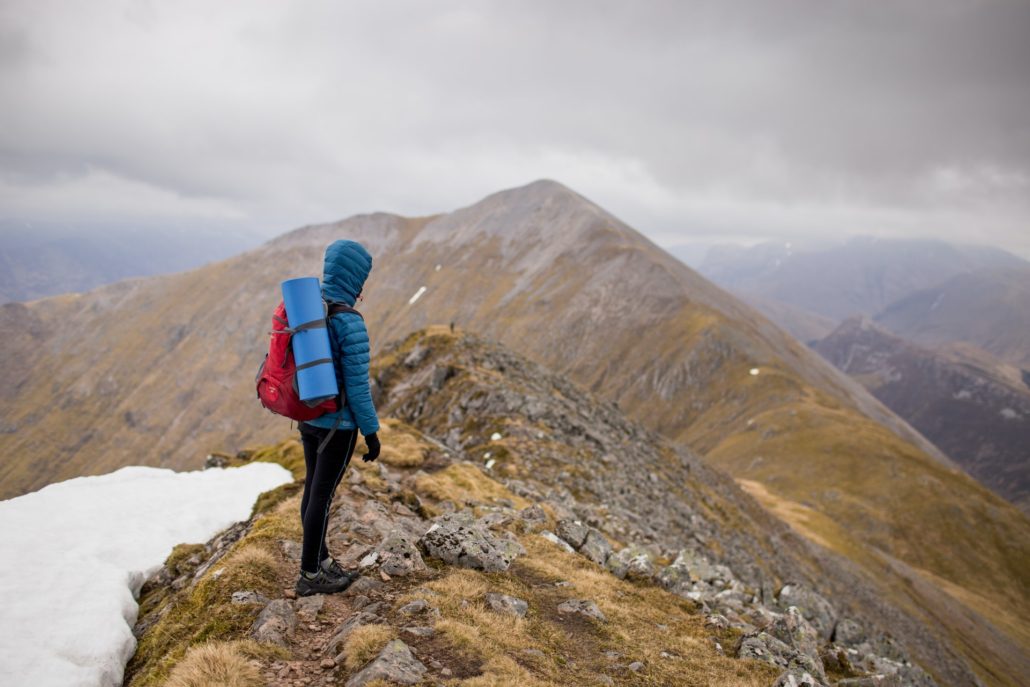
Backpacking in the rain means taking extra precautions
I’m sure you’re already aware of the fact that you’ll face slick, puddled trails and that rocks, logs, and slopes will be hazardous, but you should be conscious of other potential problems ahead of you.
The most common danger you will encounter will be slick surfaces. Navigating difficult terrain can be hard already, but slippery rocks, hills, and so on can easily leave you injured.
Trekking poles can be very useful if you know you’ll end up on some especially slick terrain. The two added points of contact with the ground might save you if you need some extra balance.
If hiking in bad weather, sticking to forested areas can also assist in avoiding many of the problems faced when backpacking in the rain. The added coverage from trees often makes rainfall less intense to deal with.
Larger rainstorms could make a river crossing much more dangerous. Surging river levels could make a generally easy crossing challenging. The same rules apply to most river crossings.
Be aware of what is downstream in case you’ve swept away, be wary of strainers to catch logs, brush, and debris in streams. Water flows through, a person can’t. If you have to cross, look for an area where the water is running slower, like undercuts or straight stretches to cross. Use extra caution if utilizing things like logs as a bridge, and have a contingency plan in case something goes wrong in a potentially dangerous crossing.
Flash flooding, mud, and rock slides are all more common in rain as well. If you plan to hike in a canyon, make sure to frequently check the weather in case of flash floods, and be aware of how to quickly get to high ground if necessary.
Heavier rains also make mud and/or rock slides more likely, a danger that occasionally kills hikers. Be aware of your surroundings, listen for sounds indicating moving debris, and be alert to changes in weather.
Know When to Bail
If you aren’t prepared for hardcore rain on your backpacking trip, if you’re miserable because of how drenched you are and how hard it’s getting, or if you’re unsafe due to heavier storms and lightning with little shelter, it’s ok to bail.
It’s not an especially fun option, and you may feel the need to press on, but the thing to remember is that it’s more important to be safe if you’re doubtful.
I’m not saying that you have to quit at the sight of a cloud that’s a little too gray or once you smell rain in the air, I’m saying that you will know when you should hang it up for the day. Like most things in hiking, the time you decide the weather is too much for your backpacking trip will vary from person to person.
If you’re a more casual hiker who wants a short, comfortable, and fun trip, you may not enjoy your experience beyond light to moderate rain. If you like a challenging trip, it’s perfectly acceptable to be outdoors in heavier rainfall or storms. It all comes down to what you want your experience to be, and if you’re prepared for the task at hand.
Conclusion
While there are obstacles to backpacking in the rain, if you’re prepared it can be a great time. You’ll probably be one of the few people on the trail, and it can be extraordinarily peaceful. I personally love to be in the woods or on the trail in the rain.
If you properly prepare and make sure you’re aware of the potential dangers, you’ll have no problems. You’ll probably end up wet, and it may not always be a great time, but there’s no reason to fear a day backpacking in rain.
